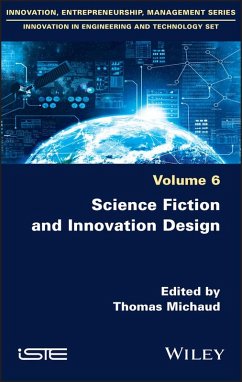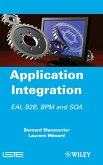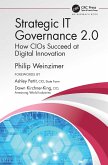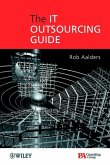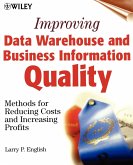Science Fiction and Innovation Design
Herausgeber: Michaud, Thomas
Science Fiction and Innovation Design
Herausgeber: Michaud, Thomas
- Gebundenes Buch
- Merkliste
- Auf die Merkliste
- Bewerten Bewerten
- Teilen
- Produkt teilen
- Produkterinnerung
- Produkterinnerung
Science fiction is often presented as a source of utopia, or even of prophecies, used in capitalism to promote social, political and technoscientific innovations. Science Fiction and Innovation Design assesses the validity of this approach by exploring the impact this imaginary world has on the creativity of engineers and researchers. Companies seek to anticipate and predict the future through approaches such as design fiction: mobilizing representations of science fiction to create prototypes and develop scenarios relevant to organizational strategy. The conquest of Mars or the weapons of the…mehr
Andere Kunden interessierten sich auch für
![Application Integration Application Integration]() Application Integration187,99 €
Application Integration187,99 €![Digital Transformation Roadmap Digital Transformation Roadmap]() Hamed TaherdoostDigital Transformation Roadmap152,99 €
Hamed TaherdoostDigital Transformation Roadmap152,99 €![Knowledge Acquisition in Practice Knowledge Acquisition in Practice]() Nicholas Ross MiltonKnowledge Acquisition in Practice77,99 €
Nicholas Ross MiltonKnowledge Acquisition in Practice77,99 €![Management of Organizational Culture as a Stabilizer of Changes Management of Organizational Culture as a Stabilizer of Changes]() Ibrahiem M M El EmaryManagement of Organizational Culture as a Stabilizer of Changes165,99 €
Ibrahiem M M El EmaryManagement of Organizational Culture as a Stabilizer of Changes165,99 €![Strategic IT Governance 2.0 Strategic IT Governance 2.0]() Philip WeinzimerStrategic IT Governance 2.0152,99 €
Philip WeinzimerStrategic IT Governance 2.0152,99 €![The It Outsourcing Guide The It Outsourcing Guide]() Rob AaldersThe It Outsourcing Guide80,99 €
Rob AaldersThe It Outsourcing Guide80,99 €![Data Warehouse Quality Data Warehouse Quality]() Larry P. EnglishData Warehouse Quality95,99 €
Larry P. EnglishData Warehouse Quality95,99 €-
-
-
Science fiction is often presented as a source of utopia, or even of prophecies, used in capitalism to promote social, political and technoscientific innovations. Science Fiction and Innovation Design assesses the validity of this approach by exploring the impact this imaginary world has on the creativity of engineers and researchers. Companies seek to anticipate and predict the future through approaches such as design fiction: mobilizing representations of science fiction to create prototypes and develop scenarios relevant to organizational strategy. The conquest of Mars or the weapons of the future are examples developed by authors to demonstrate how design innovation involves continuous dialogue between multiple players, from the scientist to the manager, through to the designers and the science fiction writers.
Hinweis: Dieser Artikel kann nur an eine deutsche Lieferadresse ausgeliefert werden.
Hinweis: Dieser Artikel kann nur an eine deutsche Lieferadresse ausgeliefert werden.
Produktdetails
- Produktdetails
- Verlag: Wiley
- Seitenzahl: 240
- Erscheinungstermin: 3. November 2020
- Englisch
- Abmessung: 234mm x 156mm x 14mm
- Gewicht: 499g
- ISBN-13: 9781786305831
- ISBN-10: 1786305836
- Artikelnr.: 60072927
- Herstellerkennzeichnung
- Libri GmbH
- Europaallee 1
- 36244 Bad Hersfeld
- gpsr@libri.de
- Verlag: Wiley
- Seitenzahl: 240
- Erscheinungstermin: 3. November 2020
- Englisch
- Abmessung: 234mm x 156mm x 14mm
- Gewicht: 499g
- ISBN-13: 9781786305831
- ISBN-10: 1786305836
- Artikelnr.: 60072927
- Herstellerkennzeichnung
- Libri GmbH
- Europaallee 1
- 36244 Bad Hersfeld
- gpsr@libri.de
Thomas Michaud holds a PhD in Management Science and an MBA. He is the author of Innovation, Between Science and Science Fiction (ISTE-Wiley, 2017) and studies the impact of the imagination on creativity and foresight.
Introduction ix
Thomas MICHAUD
Chapter 1. Technological Innovations in the Post-Apocalyptic World: Lessons
Learned from Science Fiction Movies 1
Nadine BOUDOU
1.1. Introduction 1
1.2. The future machine of humanity 2
1.3. A pending world? 4
1.4. Consuming the world 6
1.5. A finite world 8
1.6. Conclusion 11
1.7. References 12
Chapter 2. Using Science Fiction in Engineering Education: Technological
Imagination as an Element of Technical Culture 15
Marianne CHOUTEAU and Céline NGUYEN
2.1. Introduction 15
2.2. What is technical culture? 17
2.2.1. In the name of autonomy 17
2.2.2. For a non-segmented technical culture 19
2.3. Science fiction, technology and narrative: fertile connections 20
2.3.1. Science fiction, a sociotechnical genre 21
2.3.2. Science fiction: a special genre in the service of technical culture
22
2.4. Science fiction and the imaginary world at the heart of training 26
2.4.1. Exploring science fiction representations 27
2.4.2. Science fiction to build an ethical approach 29
2.4.3. Perspectives: harvesting and building on science fiction imaginary
worlds in order to innovate 31
2.5. Conclusion 33
2.6. References 34
Chapter 3. Engineers Versus Designers: Transposition of the Technical
Imaginary World into the Visual 37
Florin ALEXA-MORCOV
3.1. Introduction 37
3.2. From applied science to applied art 38
3.3. The question of the "object" in contemporary society 41
3.4. The "transparency" of technology 45
3.5. "Transparent" objects 46
3.6. "Deconstructed" objects 46
3.7. "Printed" objects 46
3.8. "Skeleton" objects 47
3.9. "Impossible" objects 47
3.10. Conclusion 47
3.11. References 48
Chapter 4. Imaginary Worlds to Be Projected or to Be Criticized?
Methodological Considerations 51
Nicolas MINVIELLE, Remy HEMEZ and Olivier WATHELET
4.1. Introduction 51
4.2. Challenges in the production of a corpus of imagination 52
4.3. Imaginary worlds of various qualities 54
4.4. Representations that are often appropriable and exploratory 55
4.5. New vulnerabilities 57
4.6. Context, a first point of entry for appropriating the imaginary worlds
58
4.7. Uses, another point of entry for appropriating the imaginary worlds 60
4.8. Conclusion 64
4.9. References 67
Chapter 5. Marsism, from Science Fiction to Ideology 69
Thomas MICHAUD
5.1. Introduction 69
5.2. The Mars Society's martian imaginary world 71
5.3. Elon Musk, a utopian entrepreneurial spirit 74
5.4. The technotype of the extraterrestrial base 77
5.5. Marsism, nasaism, communism and technoscientific microideologies 80
5.6. Conclusion 83
5.7. References 84
Chapter 6. Quo Vadis Engineering? Science Fiction as a Means to Expand the
Epistemic Boundaries of Technoscientific Innovation 89
Marie-Luc ARPIN, Corinne GENDRON, Nicolas MERVEILLE and Jean-Pierre REVÉRET
6.1. Introduction 89
6.2. Science fiction at the heart of engineering innovation 90
6.3. Figures of inevitability: the engineer at the confluence of discourses
92
6.3.1. The disruption-less discourses of disruption 93
6.3.2. The "convergence" discourse 93
6.3.3. The engineer character at the confluence of discourses 95
6.4. Instrumentalizing the social 96
6.4.1. "The art of the long view", or the theory of strategic foresight 98
6.4.2. The Engineer of 2020 or the "instrumentalization" of strategic
forecasting theory 99
6.5. Science fiction as emancipation from the "problem-form" 104
6.6. Conclusion 109
6.7. References 110
Chapter 7. Design Fiction, Technotypes and Innovation 113
Thomas MICHAUD
7.1. Introduction 113
7.2. Altshuller, from science fiction to the TRIZ method 116
7.3. John Arnold's approach 121
7.4. The emergence of design fiction 124
7.5. From the plausibility of design fiction to possible disappointment 128
7.6. The theory of the failure of the imaginary world 129
7.7. Science fiction prototyping and design fiction 131
7.8. The pioneer, Julian Bleecker 132
7.9. Dreaming, a simulator of the dangers to come 134
7.10. Some approaches to design fiction 135
7.11. Science fiction, design fiction and foresight 137
7.12. Toward a new mythology because of storytelling 139
7.13. From utopian technologies to the technotype theory 141
7.14. Four proposals on technotypes 146
7.15. Beliefs and behavioral economics 147
7.16. Realistic, imaginary systems and their cyclicity 148
7.17. Conclusion 149
7.18. References 152
Chapter. 8 Science Fiction, Innovation and Organization: Where Do We Stand?
163
Sonia ADAM-LEDUNOIS, Claire AUPLAT and Sébastien DAMART
8.1. Introduction 163
8.2. Science fiction in its diversity 164
8.3. A focused review of academic literature on science fiction: method 168
8.4. Systematic literature review: findings 172
8.5. How science fiction sees technology and organizations 174
8.6. Dystopian visions of technologies and organizations 175
8.7. Highlighting ideologies behind technology and organizations 177
8.8. Science fiction as the source of new technological and organizational
scenarios 180
8.9. Conclusion: three demonstrations and a possible research avenue 181
8.10. References 181
List of Authors 193
Index 195
Thomas MICHAUD
Chapter 1. Technological Innovations in the Post-Apocalyptic World: Lessons
Learned from Science Fiction Movies 1
Nadine BOUDOU
1.1. Introduction 1
1.2. The future machine of humanity 2
1.3. A pending world? 4
1.4. Consuming the world 6
1.5. A finite world 8
1.6. Conclusion 11
1.7. References 12
Chapter 2. Using Science Fiction in Engineering Education: Technological
Imagination as an Element of Technical Culture 15
Marianne CHOUTEAU and Céline NGUYEN
2.1. Introduction 15
2.2. What is technical culture? 17
2.2.1. In the name of autonomy 17
2.2.2. For a non-segmented technical culture 19
2.3. Science fiction, technology and narrative: fertile connections 20
2.3.1. Science fiction, a sociotechnical genre 21
2.3.2. Science fiction: a special genre in the service of technical culture
22
2.4. Science fiction and the imaginary world at the heart of training 26
2.4.1. Exploring science fiction representations 27
2.4.2. Science fiction to build an ethical approach 29
2.4.3. Perspectives: harvesting and building on science fiction imaginary
worlds in order to innovate 31
2.5. Conclusion 33
2.6. References 34
Chapter 3. Engineers Versus Designers: Transposition of the Technical
Imaginary World into the Visual 37
Florin ALEXA-MORCOV
3.1. Introduction 37
3.2. From applied science to applied art 38
3.3. The question of the "object" in contemporary society 41
3.4. The "transparency" of technology 45
3.5. "Transparent" objects 46
3.6. "Deconstructed" objects 46
3.7. "Printed" objects 46
3.8. "Skeleton" objects 47
3.9. "Impossible" objects 47
3.10. Conclusion 47
3.11. References 48
Chapter 4. Imaginary Worlds to Be Projected or to Be Criticized?
Methodological Considerations 51
Nicolas MINVIELLE, Remy HEMEZ and Olivier WATHELET
4.1. Introduction 51
4.2. Challenges in the production of a corpus of imagination 52
4.3. Imaginary worlds of various qualities 54
4.4. Representations that are often appropriable and exploratory 55
4.5. New vulnerabilities 57
4.6. Context, a first point of entry for appropriating the imaginary worlds
58
4.7. Uses, another point of entry for appropriating the imaginary worlds 60
4.8. Conclusion 64
4.9. References 67
Chapter 5. Marsism, from Science Fiction to Ideology 69
Thomas MICHAUD
5.1. Introduction 69
5.2. The Mars Society's martian imaginary world 71
5.3. Elon Musk, a utopian entrepreneurial spirit 74
5.4. The technotype of the extraterrestrial base 77
5.5. Marsism, nasaism, communism and technoscientific microideologies 80
5.6. Conclusion 83
5.7. References 84
Chapter 6. Quo Vadis Engineering? Science Fiction as a Means to Expand the
Epistemic Boundaries of Technoscientific Innovation 89
Marie-Luc ARPIN, Corinne GENDRON, Nicolas MERVEILLE and Jean-Pierre REVÉRET
6.1. Introduction 89
6.2. Science fiction at the heart of engineering innovation 90
6.3. Figures of inevitability: the engineer at the confluence of discourses
92
6.3.1. The disruption-less discourses of disruption 93
6.3.2. The "convergence" discourse 93
6.3.3. The engineer character at the confluence of discourses 95
6.4. Instrumentalizing the social 96
6.4.1. "The art of the long view", or the theory of strategic foresight 98
6.4.2. The Engineer of 2020 or the "instrumentalization" of strategic
forecasting theory 99
6.5. Science fiction as emancipation from the "problem-form" 104
6.6. Conclusion 109
6.7. References 110
Chapter 7. Design Fiction, Technotypes and Innovation 113
Thomas MICHAUD
7.1. Introduction 113
7.2. Altshuller, from science fiction to the TRIZ method 116
7.3. John Arnold's approach 121
7.4. The emergence of design fiction 124
7.5. From the plausibility of design fiction to possible disappointment 128
7.6. The theory of the failure of the imaginary world 129
7.7. Science fiction prototyping and design fiction 131
7.8. The pioneer, Julian Bleecker 132
7.9. Dreaming, a simulator of the dangers to come 134
7.10. Some approaches to design fiction 135
7.11. Science fiction, design fiction and foresight 137
7.12. Toward a new mythology because of storytelling 139
7.13. From utopian technologies to the technotype theory 141
7.14. Four proposals on technotypes 146
7.15. Beliefs and behavioral economics 147
7.16. Realistic, imaginary systems and their cyclicity 148
7.17. Conclusion 149
7.18. References 152
Chapter. 8 Science Fiction, Innovation and Organization: Where Do We Stand?
163
Sonia ADAM-LEDUNOIS, Claire AUPLAT and Sébastien DAMART
8.1. Introduction 163
8.2. Science fiction in its diversity 164
8.3. A focused review of academic literature on science fiction: method 168
8.4. Systematic literature review: findings 172
8.5. How science fiction sees technology and organizations 174
8.6. Dystopian visions of technologies and organizations 175
8.7. Highlighting ideologies behind technology and organizations 177
8.8. Science fiction as the source of new technological and organizational
scenarios 180
8.9. Conclusion: three demonstrations and a possible research avenue 181
8.10. References 181
List of Authors 193
Index 195
Introduction ix
Thomas MICHAUD
Chapter 1. Technological Innovations in the Post-Apocalyptic World: Lessons
Learned from Science Fiction Movies 1
Nadine BOUDOU
1.1. Introduction 1
1.2. The future machine of humanity 2
1.3. A pending world? 4
1.4. Consuming the world 6
1.5. A finite world 8
1.6. Conclusion 11
1.7. References 12
Chapter 2. Using Science Fiction in Engineering Education: Technological
Imagination as an Element of Technical Culture 15
Marianne CHOUTEAU and Céline NGUYEN
2.1. Introduction 15
2.2. What is technical culture? 17
2.2.1. In the name of autonomy 17
2.2.2. For a non-segmented technical culture 19
2.3. Science fiction, technology and narrative: fertile connections 20
2.3.1. Science fiction, a sociotechnical genre 21
2.3.2. Science fiction: a special genre in the service of technical culture
22
2.4. Science fiction and the imaginary world at the heart of training 26
2.4.1. Exploring science fiction representations 27
2.4.2. Science fiction to build an ethical approach 29
2.4.3. Perspectives: harvesting and building on science fiction imaginary
worlds in order to innovate 31
2.5. Conclusion 33
2.6. References 34
Chapter 3. Engineers Versus Designers: Transposition of the Technical
Imaginary World into the Visual 37
Florin ALEXA-MORCOV
3.1. Introduction 37
3.2. From applied science to applied art 38
3.3. The question of the "object" in contemporary society 41
3.4. The "transparency" of technology 45
3.5. "Transparent" objects 46
3.6. "Deconstructed" objects 46
3.7. "Printed" objects 46
3.8. "Skeleton" objects 47
3.9. "Impossible" objects 47
3.10. Conclusion 47
3.11. References 48
Chapter 4. Imaginary Worlds to Be Projected or to Be Criticized?
Methodological Considerations 51
Nicolas MINVIELLE, Remy HEMEZ and Olivier WATHELET
4.1. Introduction 51
4.2. Challenges in the production of a corpus of imagination 52
4.3. Imaginary worlds of various qualities 54
4.4. Representations that are often appropriable and exploratory 55
4.5. New vulnerabilities 57
4.6. Context, a first point of entry for appropriating the imaginary worlds
58
4.7. Uses, another point of entry for appropriating the imaginary worlds 60
4.8. Conclusion 64
4.9. References 67
Chapter 5. Marsism, from Science Fiction to Ideology 69
Thomas MICHAUD
5.1. Introduction 69
5.2. The Mars Society's martian imaginary world 71
5.3. Elon Musk, a utopian entrepreneurial spirit 74
5.4. The technotype of the extraterrestrial base 77
5.5. Marsism, nasaism, communism and technoscientific microideologies 80
5.6. Conclusion 83
5.7. References 84
Chapter 6. Quo Vadis Engineering? Science Fiction as a Means to Expand the
Epistemic Boundaries of Technoscientific Innovation 89
Marie-Luc ARPIN, Corinne GENDRON, Nicolas MERVEILLE and Jean-Pierre REVÉRET
6.1. Introduction 89
6.2. Science fiction at the heart of engineering innovation 90
6.3. Figures of inevitability: the engineer at the confluence of discourses
92
6.3.1. The disruption-less discourses of disruption 93
6.3.2. The "convergence" discourse 93
6.3.3. The engineer character at the confluence of discourses 95
6.4. Instrumentalizing the social 96
6.4.1. "The art of the long view", or the theory of strategic foresight 98
6.4.2. The Engineer of 2020 or the "instrumentalization" of strategic
forecasting theory 99
6.5. Science fiction as emancipation from the "problem-form" 104
6.6. Conclusion 109
6.7. References 110
Chapter 7. Design Fiction, Technotypes and Innovation 113
Thomas MICHAUD
7.1. Introduction 113
7.2. Altshuller, from science fiction to the TRIZ method 116
7.3. John Arnold's approach 121
7.4. The emergence of design fiction 124
7.5. From the plausibility of design fiction to possible disappointment 128
7.6. The theory of the failure of the imaginary world 129
7.7. Science fiction prototyping and design fiction 131
7.8. The pioneer, Julian Bleecker 132
7.9. Dreaming, a simulator of the dangers to come 134
7.10. Some approaches to design fiction 135
7.11. Science fiction, design fiction and foresight 137
7.12. Toward a new mythology because of storytelling 139
7.13. From utopian technologies to the technotype theory 141
7.14. Four proposals on technotypes 146
7.15. Beliefs and behavioral economics 147
7.16. Realistic, imaginary systems and their cyclicity 148
7.17. Conclusion 149
7.18. References 152
Chapter. 8 Science Fiction, Innovation and Organization: Where Do We Stand?
163
Sonia ADAM-LEDUNOIS, Claire AUPLAT and Sébastien DAMART
8.1. Introduction 163
8.2. Science fiction in its diversity 164
8.3. A focused review of academic literature on science fiction: method 168
8.4. Systematic literature review: findings 172
8.5. How science fiction sees technology and organizations 174
8.6. Dystopian visions of technologies and organizations 175
8.7. Highlighting ideologies behind technology and organizations 177
8.8. Science fiction as the source of new technological and organizational
scenarios 180
8.9. Conclusion: three demonstrations and a possible research avenue 181
8.10. References 181
List of Authors 193
Index 195
Thomas MICHAUD
Chapter 1. Technological Innovations in the Post-Apocalyptic World: Lessons
Learned from Science Fiction Movies 1
Nadine BOUDOU
1.1. Introduction 1
1.2. The future machine of humanity 2
1.3. A pending world? 4
1.4. Consuming the world 6
1.5. A finite world 8
1.6. Conclusion 11
1.7. References 12
Chapter 2. Using Science Fiction in Engineering Education: Technological
Imagination as an Element of Technical Culture 15
Marianne CHOUTEAU and Céline NGUYEN
2.1. Introduction 15
2.2. What is technical culture? 17
2.2.1. In the name of autonomy 17
2.2.2. For a non-segmented technical culture 19
2.3. Science fiction, technology and narrative: fertile connections 20
2.3.1. Science fiction, a sociotechnical genre 21
2.3.2. Science fiction: a special genre in the service of technical culture
22
2.4. Science fiction and the imaginary world at the heart of training 26
2.4.1. Exploring science fiction representations 27
2.4.2. Science fiction to build an ethical approach 29
2.4.3. Perspectives: harvesting and building on science fiction imaginary
worlds in order to innovate 31
2.5. Conclusion 33
2.6. References 34
Chapter 3. Engineers Versus Designers: Transposition of the Technical
Imaginary World into the Visual 37
Florin ALEXA-MORCOV
3.1. Introduction 37
3.2. From applied science to applied art 38
3.3. The question of the "object" in contemporary society 41
3.4. The "transparency" of technology 45
3.5. "Transparent" objects 46
3.6. "Deconstructed" objects 46
3.7. "Printed" objects 46
3.8. "Skeleton" objects 47
3.9. "Impossible" objects 47
3.10. Conclusion 47
3.11. References 48
Chapter 4. Imaginary Worlds to Be Projected or to Be Criticized?
Methodological Considerations 51
Nicolas MINVIELLE, Remy HEMEZ and Olivier WATHELET
4.1. Introduction 51
4.2. Challenges in the production of a corpus of imagination 52
4.3. Imaginary worlds of various qualities 54
4.4. Representations that are often appropriable and exploratory 55
4.5. New vulnerabilities 57
4.6. Context, a first point of entry for appropriating the imaginary worlds
58
4.7. Uses, another point of entry for appropriating the imaginary worlds 60
4.8. Conclusion 64
4.9. References 67
Chapter 5. Marsism, from Science Fiction to Ideology 69
Thomas MICHAUD
5.1. Introduction 69
5.2. The Mars Society's martian imaginary world 71
5.3. Elon Musk, a utopian entrepreneurial spirit 74
5.4. The technotype of the extraterrestrial base 77
5.5. Marsism, nasaism, communism and technoscientific microideologies 80
5.6. Conclusion 83
5.7. References 84
Chapter 6. Quo Vadis Engineering? Science Fiction as a Means to Expand the
Epistemic Boundaries of Technoscientific Innovation 89
Marie-Luc ARPIN, Corinne GENDRON, Nicolas MERVEILLE and Jean-Pierre REVÉRET
6.1. Introduction 89
6.2. Science fiction at the heart of engineering innovation 90
6.3. Figures of inevitability: the engineer at the confluence of discourses
92
6.3.1. The disruption-less discourses of disruption 93
6.3.2. The "convergence" discourse 93
6.3.3. The engineer character at the confluence of discourses 95
6.4. Instrumentalizing the social 96
6.4.1. "The art of the long view", or the theory of strategic foresight 98
6.4.2. The Engineer of 2020 or the "instrumentalization" of strategic
forecasting theory 99
6.5. Science fiction as emancipation from the "problem-form" 104
6.6. Conclusion 109
6.7. References 110
Chapter 7. Design Fiction, Technotypes and Innovation 113
Thomas MICHAUD
7.1. Introduction 113
7.2. Altshuller, from science fiction to the TRIZ method 116
7.3. John Arnold's approach 121
7.4. The emergence of design fiction 124
7.5. From the plausibility of design fiction to possible disappointment 128
7.6. The theory of the failure of the imaginary world 129
7.7. Science fiction prototyping and design fiction 131
7.8. The pioneer, Julian Bleecker 132
7.9. Dreaming, a simulator of the dangers to come 134
7.10. Some approaches to design fiction 135
7.11. Science fiction, design fiction and foresight 137
7.12. Toward a new mythology because of storytelling 139
7.13. From utopian technologies to the technotype theory 141
7.14. Four proposals on technotypes 146
7.15. Beliefs and behavioral economics 147
7.16. Realistic, imaginary systems and their cyclicity 148
7.17. Conclusion 149
7.18. References 152
Chapter. 8 Science Fiction, Innovation and Organization: Where Do We Stand?
163
Sonia ADAM-LEDUNOIS, Claire AUPLAT and Sébastien DAMART
8.1. Introduction 163
8.2. Science fiction in its diversity 164
8.3. A focused review of academic literature on science fiction: method 168
8.4. Systematic literature review: findings 172
8.5. How science fiction sees technology and organizations 174
8.6. Dystopian visions of technologies and organizations 175
8.7. Highlighting ideologies behind technology and organizations 177
8.8. Science fiction as the source of new technological and organizational
scenarios 180
8.9. Conclusion: three demonstrations and a possible research avenue 181
8.10. References 181
List of Authors 193
Index 195

